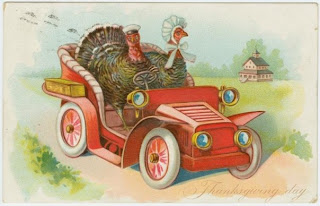As
world leaders gather in Rome to discuss a new strategy to combat world hunger, a few news stories this morning highlighted the problems at the other end of the hunger spectrum: obesity and poor nutrition even in countries where food is plentiful.
America is already a world leader in obesity and Type 2 diabetes, and a story in
The Times Online says that the country may be doomed to remain the leader, "as long as the process by which it elects its presidents starts in Iowa — a state known for its cornfields and corn subsidies."
With a minimum price of $1.90 per bushel of corn guaranteed by the 2007 Farm Bill, activists say that the crop is a guaranteed winner for the farmers of the Midwest — and one of the results is something called super-abundant high-fructose corn syrup (HFCS).
Known to its detractors as “liquid Satan”, HFCS is the sweetener of choice in the vast bulk of fizzy drinks and packaged cakes and biscuits consumed in the US. Its producers have long enjoyed the solid support of the US Senate and most presidential candidates, who gravitate every four years to Iowa to pledge their allegiance to its voters. “Farm subsidies are a third rail of Iowa politics,” a former staffer on Senator John Edwards’s presidential campaign said yesterday. “You don’t touch them.”
The 2007 Farm Bill conferred more than $2 billion on Iowa in corn subsidies for 2007 to 2012 — nearly 80 per cent of the state’s subsidies for all crops for the period. Americans’ consumption of corn on the cob has not risen markedly as a result, but their intake of HFCS has been climbing for decades, from 0.6lb per person per year in 1970 to 73.5lb in 2007.
Americans are not alone in their weight gain, however. In Venezuela, the country's president, Hugo Chávez, "has sounded the alarm about his compatriots' expanding waistlines and called on them to wage battle against the bulge, saying the revolution needed them fit and strong," according to
a story in the Guardian.
Chávez's intervention was prompted by a study which suggested that in the past two decades the average adult Venezuelan's "excess" weight had ballooned from 6.3kg (1 stone) to 14.5kg.
The same study said nutrition had improved, and the president said the revolution had ensured even the poor had three meals a day. "Now we are eating better but we need to be careful," he said. "Watch out for the fat people!"
Battling obesity, the story explains, may be a doomed fight in Venezuela, where people are "fanatical about fattening dishes such as chicharrón (fried pork rinds) and like to fill arepas, a type of corn patty, with roast pork, beef and blocks of cheese. Meals are not complete without fizzy drinks, beer or rum and Coke."
If you think these sound like fattening meals,
another story in the U.K.'s Daily Express describes the most common meals eaten by British families. There are, apparently, nine main dishes that most Mums rely on, including: spaghetti bolognese, roast dinners, shepherd’s or cottage pie and another pasta dish.
Translation: pasta with meat, meat with potatoes on the side, meat with potatoes on top, and another kind of pasta.
The survey also found that cooking dinner takes the average mother 35 minutes from start to finish, and four in 10 play safe by choosing meals they know their family like.
Over a third don’t want to waste money cooking food the kids screw their noses up at, and 44 per cent don’t have the time to experiment anyway. However, two-thirds feel guilty that they don’t make the time.






